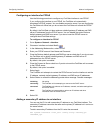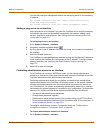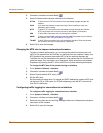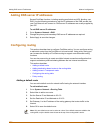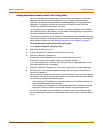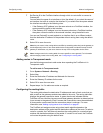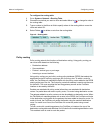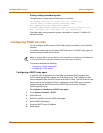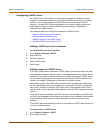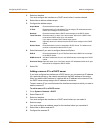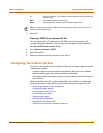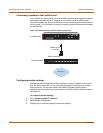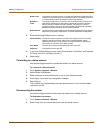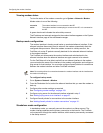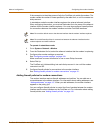
104 Fortinet Inc.
Configuring DHCP services Network configuration
Policy routing command syntax
Configure policy routing using the following CLI command.
set system route policy <route_int> src <source_ip>
<source_mask> iifname <source-interface_name>
dst <destination_ip> <destination_mask>
oifname <destination-interface_name> protocol <protocol_int>
port <low-port_int> <high-port_int> gw <gateway_ip>
Complete policy routing command syntax is described in Volume 6: FortiGate CLI
Reference Guide.
Configuring DHCP services
You can configure DHCP server or DHCP relay agent functionality on any FortiGate
interface.
A FortiGate interface can act as either a DHCP server or as a DHCP relay agent. An
interface cannot provide both functions.
This section describes the following:
• Configuring a DHCP relay agent
• Configuring a DHCP server
Configuring a DHCP relay agent
In a DHCP relay configuration, the FortiGate unit forwards DHCP requests from
DHCP clients through the FortiGate unit to a DHCP server. The FortiGate unit also
returns responses from the DHCP server to the DHCP clients. The DHCP server must
have a route to the FortiGate unit that is configured as the DHCP relay so that the
packets sent by the DHCP server to the DHCP client arrive at the FortiGate
performing DHCP relay.
To configure an interface as a DHCP relay agent
1 Go to System > Network > DHCP.
2 Select Service.
3 Select the interface to be the DHCP relay agent.
4 Select DHCP Relay Agent.
5 Enter the DHCP Server IP address.
6 Select Apply.
Note: To configure DHCP server or DHCP relay functionality on an interface, the FortiGate unit
must be in NAT/Route mode and the interface must have a static IP address.



